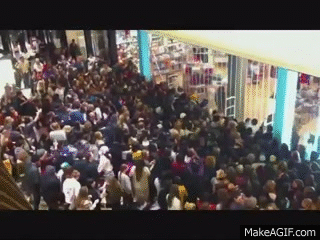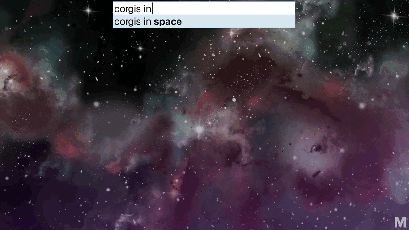
What’s new in the realms of paid search and social media? This month, Amy Rumpler, SVP of Search & Social Media Services, compiled all the latest news, trends, and resources for easy access.
New insights from Google show that deal-seeking for holiday shopping happens throughout October and November—so position your brand by extending the shopping window, starting now! Google also found that holiday shoppers are less impulsive than you might think: They do their research early, watch for sales to begin, and care more about delivering a thoughtful gift than finding the best deal.

Speaking of holiday shopping, Meta is adding new ad optimization tools to its Business Manager suite, aimed at giving better control to advertisers looking to maximize performance in Q4. For example, a new time-based budget scheduling option was announced, which lets advertisers automatically increase spending for specific dates and time periods such as Black Friday, rather than having to manually adjust budgets or schedule separate campaigns and risk interrupting overall optimization learnings.
As TikTok Shop was introduced to users across the US this month, the platform has taken steps to educate marketers, brand representatives, and agencies on their ability to drive sales directly through the app. TikTok’s foray into retail is heating up in advance of Black Friday and the holiday shopping season, and stands to make big waves in the coming years: eMarketer forecasts that m-commerce will account for half of US e-commerce sales in 2027, driven by social commerce and, in particular, TikTok’s Shoppable Ads.
TikTok’s new Attribution Analytics is meant to help marketers understand the bottom line impact of TikTok advertising. Users on the platform are often inspired by content on TikTok but don’t always act to purchase until much later—an estimated 79% of TikTok-influenced conversions are missing from last-click attribution models. Attribution Analytics gives marketers an understanding of conversions across different time windows, view-through conversions, and other granular insights that a singular click-based lens doesn’t account for.
Nearly two in five social media users admit they’ve made an impulse purchase of a product they saw on social media in the last year, with the average shopper spending $754 on those purchases. Millennials spent even more, averaging a little over $1,000 in purchases. Sadly, over half of those shoppers regretted at least one of their impulse purchases afterward, indicating it’s not just the first purchase but what brands do to win and retain customer loyalty that matters (assuming, of course, that maximizing lifetime customer value is your endgame).

YouTube's new AI feature evaluates best practices in creative, such as logo usage, video duration, voiceovers, and aspect ratios, and then recommends "ideas to try." The feature will fully launch as part of a new Google Ads experience in 2024.
YouTube’s annual report discusses how changes in technology, content creation, and consumption have impacted both creators and viewers across the platform this year. For example, trends like fan-remixed content and AI-enhanced video have taken hold, leading to new levels of creativity. In fact, more than 82% of people online between the ages of 18 and 44 have posted videos in the last year, showing that content creation is for everyone, not just large, popular channels.
The Writers Guild of America and Screen Actors Guild strikes this year brought Hollywood to a halt, creating new opportunities for social media influencers to fill the content and entertainment void. eMarketer has projected that influencer marketing will grow 3.5 times faster this year than conventional social spending, but we’re now seeing some influencers branch out beyond social content distribution to create their own multi-channel media brands—and ad dollars could follow.
Pinterest shared quite a few updates and announcements at their annual Pinterest Presents summit this month. Most notable to advertisers are a slew of features designed to help connect better with audiences across their entire Pinterest experience. While not all features are available yet globally, many are now rolling out across the US. Also announced at the summit: new ad formats, integrations, and content tools.
While social media users appear to be posting less original content, engagement with stories and most platforms continues to grow, creating an opportunity for advertisers. In fact, research shows people spend more time on social media platforms than ever before, although time spent has shifted toward checking feeds, viewing influencer content, engaging in DMs, and interacting with short-form videos.
Ever wondered how Google generates autocomplete options when users enter a search query? This piece offers a useful overview of the AI that fuels the engine. Spoiler alert: It isn't perfect, but there is a way for brands to report a negative or false keyword.

—
Want a monthly digest of all the best digital marketing articles, POVs, and reports delivered straight to your inbox? Sign up for the Basis Scout newsletter!